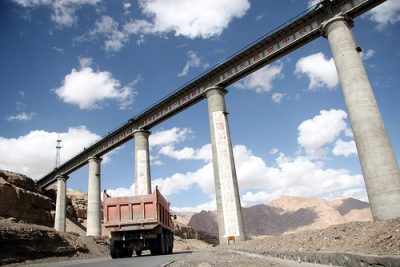Yet Deng insisted that there would be no polarisation of rich and poor in the longer term, and that people elsewhere simply needed a little patience, referring to the ‘two great situations’ in which coastal provinces would be given advantages during the early reform years but would subsequently be expected to subordinate their interests to interior areas.
Jiang Zemin’s Western Regional Development Program (‘WRDP’) aimed to meet Deng’s goals by eliminating regional disparities gradually, consolidating the unity of ethnic groups, and promoting social progress. The deadline for achieving these ambitious policy goals is the middle of the twenty-first century, by which time the intention is for regional disparities between the western and other regions to be ‘diminished considerably’. In 2002, the newly appointed Hu Jintao endorsed the WRDP as an important component of his drive for a ‘harmonious and balanced society’ and added his own ‘Revive the North-East’ (‘zhen xing dongbei’) scheme in 2004, then the ‘Rise of the Central Region’ (‘zhongbu jue qi’) scheme was officially pronounced in late 2005. With every province bar the most developed eastern ones being targeted in one way or another, the Chinese Communist Party appears to be taking the regional issue seriously—on paper at least.
Why is regional inequality such a serious issue?
Uneven development is not only an economic issue but an ethical one, particularly for a regime whose legitimacy has long been based on egalitarian principles. Deng Xiaoping might have succeeded in convincing the Chinese people that some would have to get rich before everyone else could, but if the gap between those fortunate some and the rest of the country continues to widen, and if the government fails to do anything about this, the moral foundations of the regime will be shaken. This makes the question of regional imbalance an issue of great political significance.
Will rapid industrial development in the less-developed centre and west reduce these inequalities in the next two decades?
This question permits an optimistic response: ‘yes, it is possible’. Recent analysis indicates the glory days of the east’s industrial dominance could be coming to an end, with the region no longer performing above the average across the broad spectrum of industrial sectors. In addition, there is evidence of rising costs in the east, which will provide the impetus for industrial upgrading there. In this context, a serious and committed pro-west (or at least non-pro-east) regional policy with substantial funding well spent on infrastructure and education could play a positive role in triggering self-sustaining industrial development outside the eastern region. Rising incomes in the east could provide a crucial source of demand for non-eastern products, with the east possibly becoming for western China what the industrialised world has been for the eastern region during its own industrial take-off – a stable consumer market.
However, for this to translate into a reduction in regional income inequalities would require the western region to grow faster than the east by at least 2 percentage points. It is unlikely that changing patterns of industrial development in response to market forces and the current set of regional policies will be sufficient for achieving this objective . Even when taking other non-industrial factors into account, such as the potential for out-migration and resource rents to raise the per capita incomes of those who remain in the western region, it is unlikely that the speed of growth in western China will drive Chinese regional incomes towards equality.
The pessimistic response is that; ‘no, industrial development in the less-developed centre and west cannot possibly reduce these inequalities in the next two decades’. Even if rising costs in labour-intensive manufacturing in the east produced industrial upgrading there, industry would relocate outwards to competitor nations such as India and Vietnam. Western China would then be characterised by substantial pockets of poverty and underdevelopment. The east would become increasingly integrated into the global economy, while the west would remain isolated from the rest of the world.
This outcome would pose a serious threat to the legitimacy of the Chinese Communist Party, especially if it fails to implement policies effectively that reverse the situation.
What, then, is the most likely outcome?
The balance of evidence suggests an outcome somewhere in between these two extremes. The next two decades are likely to witness limited improvements in the distribution of regional per capita incomes underpinned partially by limited re-distribution of industry towards some but not all of China’s non-coastal provinces. Thus regional inequality between the west and the rest of China is likely to be diminished marginally at best.
Jane Golley is a senior lecturer in the China Economics and Business Program at the Crawford School of Economics and Governance, ANU.
This essay is a summary of an article published in Ross Garnaut, Jane Golley and Ligang Song (eds): ‘China, The Next 20 Years of Reform and Development’.


If Chinese top policy makers are willing to use the most appropriate policies to coordinate the development strategies of the whole country inclusive of the eastern central and the western regions, it should be possible for China to do much better than “regional inequality between the west and the rest of China is likely to be diminished marginally at best”.
For example, they could use some sort of fiscal transfers and link them to encourage the private sector in the eastern region to invest in the other less well off regions to tilt a bit the balance between investing abroad and inland.
There are advantages in investing inland. For example, due to various reasons including cultural, language, systems, transport and market, the barriers or the costs and the risks of investing inland are likely to be much smaller, thus to raise the return to investment. It is also much easier to coordinate the required infrastructure development within a country, especially given the policy priority of the central government.
There are also vast labour supplies including skilled and educated personnel. Certainly it will be easier to train or educate if needed.